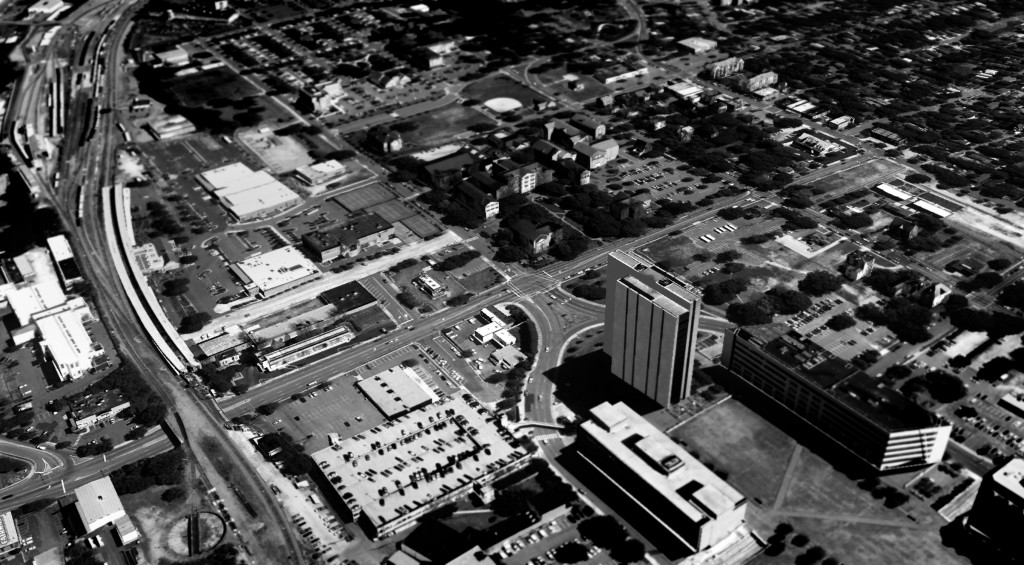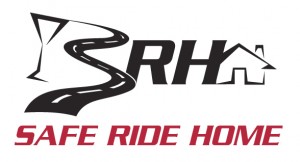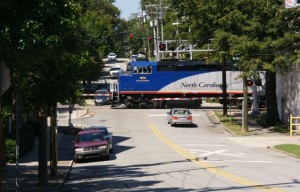
Although not well publicized, the city has received a full report regarding the issues associated with creating a rail quiet zone for downtown Raleigh. While the DLA was briefed that the city was commissioning a feasibility study late last year, we were only able to get our hands on the report a few weeks ago. This is what we’ve learned . . .
First, here’s the background.
It was way back in June 2009 that the DLA first got involved in advocating with the city of Raleigh to take steps to mitigate train horn noise in downtown Raleigh. We talked with residents who lived adjacent to the many crossings that require train operators to blow their horns all hours of the day and night. We met with the city’s Budget & Economic Development Committee in October that year to promote the use of wayside horns to reduce sound levels, and for working with the various government agencies and rail companies to create a a “quiet zone” through the downtown area. We believe that the DLA’s early involvement likely contributed to the city’s request for the quiet zone feasibility study.
With the prospect of high speed rail, the conversation shifted.
It wasn’t long before all talk of spending money to reduce noise at crossings came to a halt as the high speed rail (SEHSR project) became the focus of conversation. The easy answer to the issue of train noise disturbance appeared to be a matter of waiting for the quiet afforded by new tracks and grade separated crossings.
We all remember the sometimes heated debate that went on for over a year at public meetings regarding the high speed train route through downtown, and plans for a new regional transit system that included new downtown routes for commuter and light rail projects.
Though there is uncertainty about the future of high speed rail, the answer is still to wait.
Fast forward now to the new Quiet Zone Feasibility Assessment. It’s several years later, but the uncertainly about the “when” or “if” of the interstate and regional rail projects has never been greater. Not surprisingly, the report recommends the city “should strongly consider delaying implementation (of a quiet zone) until the timing and certainty of SEHSR implementation is determined”.
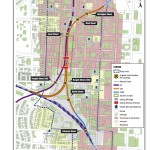
click to enlarge
The report does offer some interesting information and recommendations on how each of the seven at grade crossings would be treated to eliminate the use of train horns within a downtown quiet zone. Each of these crossings currently use 2-quadrant gates that require train operators to sound their horns as they approach. The options to quiet the crossings include the use of 4-quadrant gates, creating a grade separated crossing, or to simply close the street. Click on the thumbnail image to see an enlarged map showing the location of each of the downtown crossings.
Harrington Street (8 daily trains)
The Harrington Street crossing is located between North and Lane Streets, running directly adjacent to the West at North condo building. The study recommends the use of a 4-quadrant gate that prevents vehicles and pedestrians from entering the crossing. However, the DLA has information included in a Triangle Transit presentation from May 2011 that states that this section of Harrington Street (at Lane Street) may need to close to traffic to accommodate a future light rail station. The possibility of extending Lane Street from Harrington Street to West Street is identified as a means to mitigate traffic problems.
West Street (8 daily trains)
The West Street crossing is located just a few hundred yards south of the Harrington Street crossing, between North and Jones Street. The report recommends the use of a 4-quadrant gate, but also notes that due to the skew in the tracks the gates could require the closure of the current entrance to the adjacent automotive business that may require the property to be condemned.
Jones Street (12 daily trains)
The Jones Street crossing is located between Glenwood Avenue and West Street, and directly adjacent to the 222 Glenwood condo building along with many popular Glenwood South restaurants. The SEHSR route would require this crossing to be closed to vehicle traffic, with the acknowledged need to install a bridge for pedestrians to cross the tracks at this active intersection. Traffic would be diverted to the grade separated crossing at North Street or Hillsborough Street.
Hargett Street (10 daily trains)
Hargett Street has two crossings, one for CSX trains and the other for the Norfolk Southern. The crossings are both located within the Boylan Wye, between Boylan Avenue and West Street. As with the Jones Street crossing, the SEHSR route would require this section of Hargett Street be closed to vehicle traffic, and likewise, the use of a bridge to provide a pedestrian connection to West Street and to the new Union Station. Traffic would be diverted to nearby grade separated crossings at Morgan Street.
Martin Street (4 daily trains)
There is no public street at the Martin Street crossing, which is surrounded by industrial lots, and property owned by Triangle Transit. Only a low volume of cars cross the tracks to access a parking lot on the west side of the future site of Union Station. As part of the Union Station design plans, this crossing will be grade separated.
Cabarrus Street (15 daily trains)
The Cabarrus Street crossing is located between Harrington and Dawson Street. The report recommends the use of a 4-quadrant gate. However, plans for Union Station which call for the relocation of the nearby Amtrak Station and the extension of West Street could significantly reduce traffic at this intersection. The report therefore includes an option to use less expensive wayside horns at this crossing, thereby placing it outside the downtown quiet zone area.
What’s next?
In the early days of the SEHSR project a time frame of 2015 was talked about for the start of high speed trains traveling through the city, rushing between Washington DC and Charlotte. Today the time frame as noted in the report is “indefinite”. Along with the lack of any real progress on the Regional Transit System, the uncertainly will continue to push back the day when trains no longer blast their horns through downtown.
We commend the city for doing the study, acknowledging that the day will come when passenger trains bring needed public transit options to our city, and we will see but no longer hear the freight trains.
But the DLA is curious. Many of us live downtown and have learned to accommodate noise that at one time disturbed our sleep. Is the train noise like distant sirens that wake visitors, yet pass beneath our consciousness, having become used to the routine? We acknowledge that living in a city is sometimes a process of learning to live in close proximity with others, for the good and sometimes for the challenging!
Let us know what you think. Is this still the issue it was in 2009? Or have you blended into the rhythms of the city, willing to wait for what the future brings?
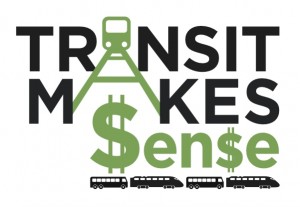 Join WakeUP Wake County and the Women’s Transportation Seminar of the Triangle for an informative program presenting the direct economic benefits of public transportation investment to business’ bottom line and the local economy. National, state and local experts will discuss opportunity for return on investment from transit, including expanding the tax base and meeting workforce needs.
Join WakeUP Wake County and the Women’s Transportation Seminar of the Triangle for an informative program presenting the direct economic benefits of public transportation investment to business’ bottom line and the local economy. National, state and local experts will discuss opportunity for return on investment from transit, including expanding the tax base and meeting workforce needs.

